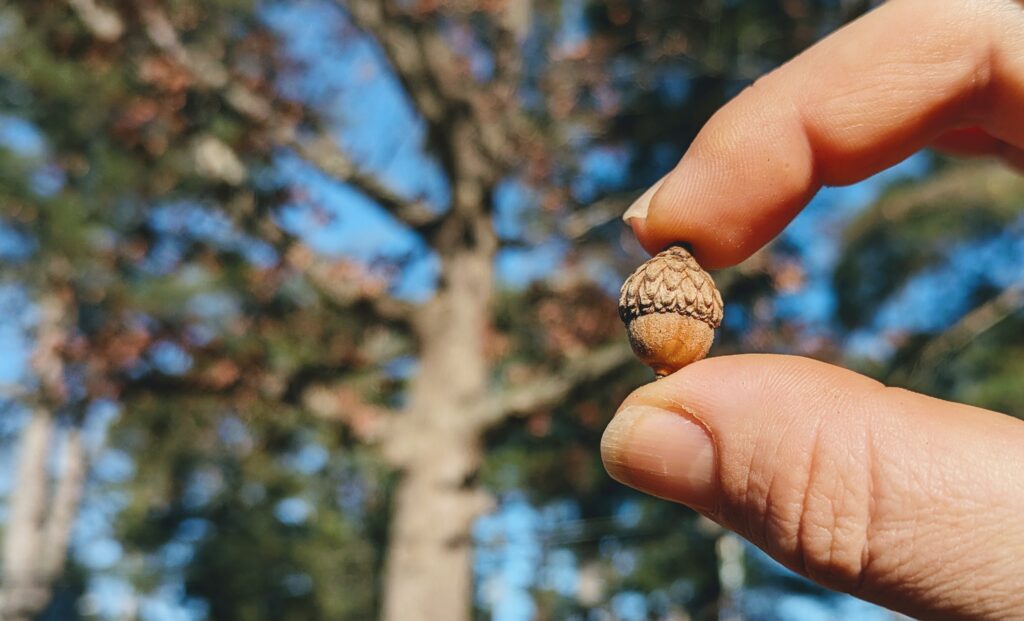
Have you been noticing all the acorns everywhere this year? Maybe you’ve heard them pinging off the roof of your car, or, if you’re especially lucky, been bonked by one in the head.
Oak trees produce acorns in boom-and-bust cycles, with small numbers of acorns in some years and big, bumper crops in others, known as “mast years.” The exact cycle varies by species and can be influenced by weather, but in our area, black oaks tend to mast every 2 years, white oaks every 3 years, and red oaks every 4 years. What is most amazing is that all of the trees of a given species in a region tend to synchronize their acorn production – so it won’t just be a mast year for one red oak tree, but for all the red oaks!
This year, the red oaks and black oaks (two of the most common oaks around Massachusetts) are both having a mast year, which is why you are seeing So. Many. Acorns!

You might find the acorns annoying, or maybe even a bit hazardous, but remember that these capped seeds are high in fat and essential nutrients, and are a vital food source for many animals over the fall and winter months. For example, blue jays will cache thousands of acorns each year and have an amazing ability to remember where to find them, though inevitably some get forgotten which is how baby oaks are born. Acorns are also crucial for other birds like wood ducks, grouse, and turkeys, and of course for many mammals like deer, mice, and even bears!
A great way to be a wildlife conservation hero is to plant an oak tree! Oaks are actually one of the most valuable trees on the landscape, and not just for their acorns. The entire tree is a smorgasborg for hundreds of caterpillar species in Massachusetts, which in turn are crucial food for hundreds of bird species, especially in the spring when they need high-protein food for their chicks. Oaks also support many other insects, like wasps, spiders, aphids, and katydids. Their leaves support even more species, like fireflies and salamanders, and in fact oak leaf litter is one of the best because it takes longer to break down (and thus provides its protective cover for longer).
So take one of those many acorns you’re seeing everywhere, and plant an oak tree! You can plant an acorn in your yard, though it might be found by a hungry critter, so if you want to be sure, get it started in a milk jug or other outdoor, squirrel-proof container and then transplant it in the spring once it has fully expanded its first two true leaves.
Want to learn more about how amazing oaks are? Check out The Nature of Oaks: The Rich Ecology of Our Most Essential Native Trees by Doug Tallamy, or watch his lecture last year at Grow Native Massachusetts.
